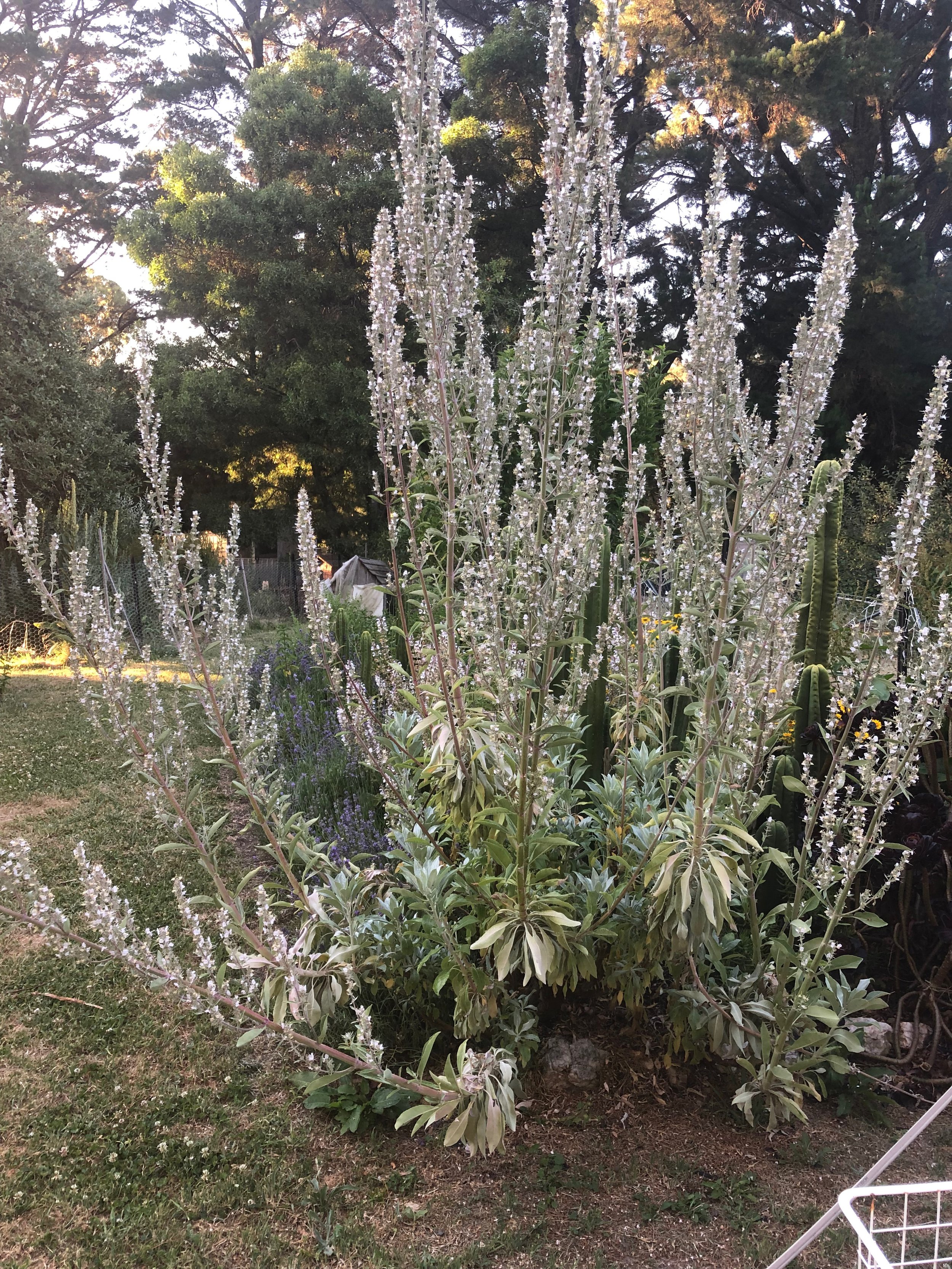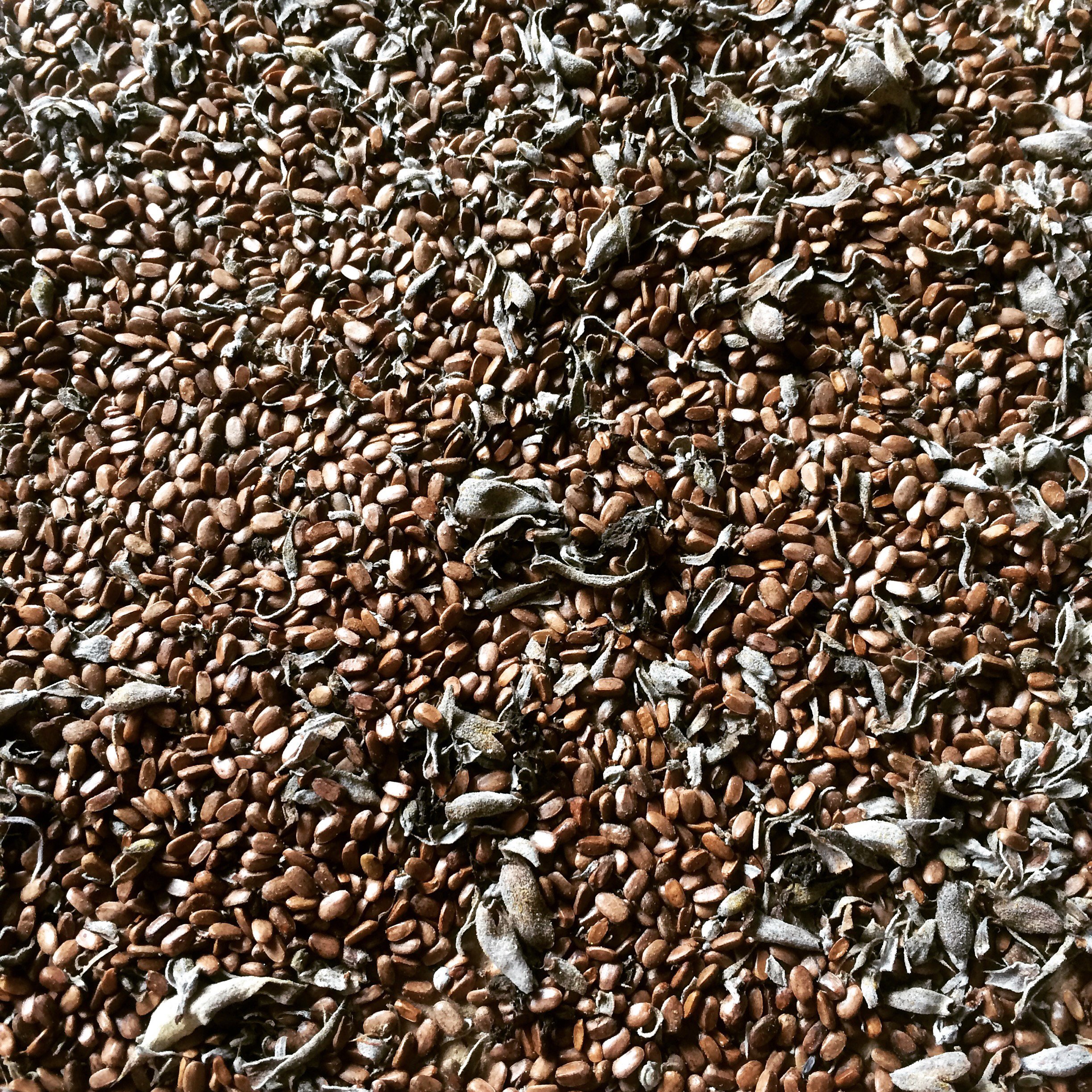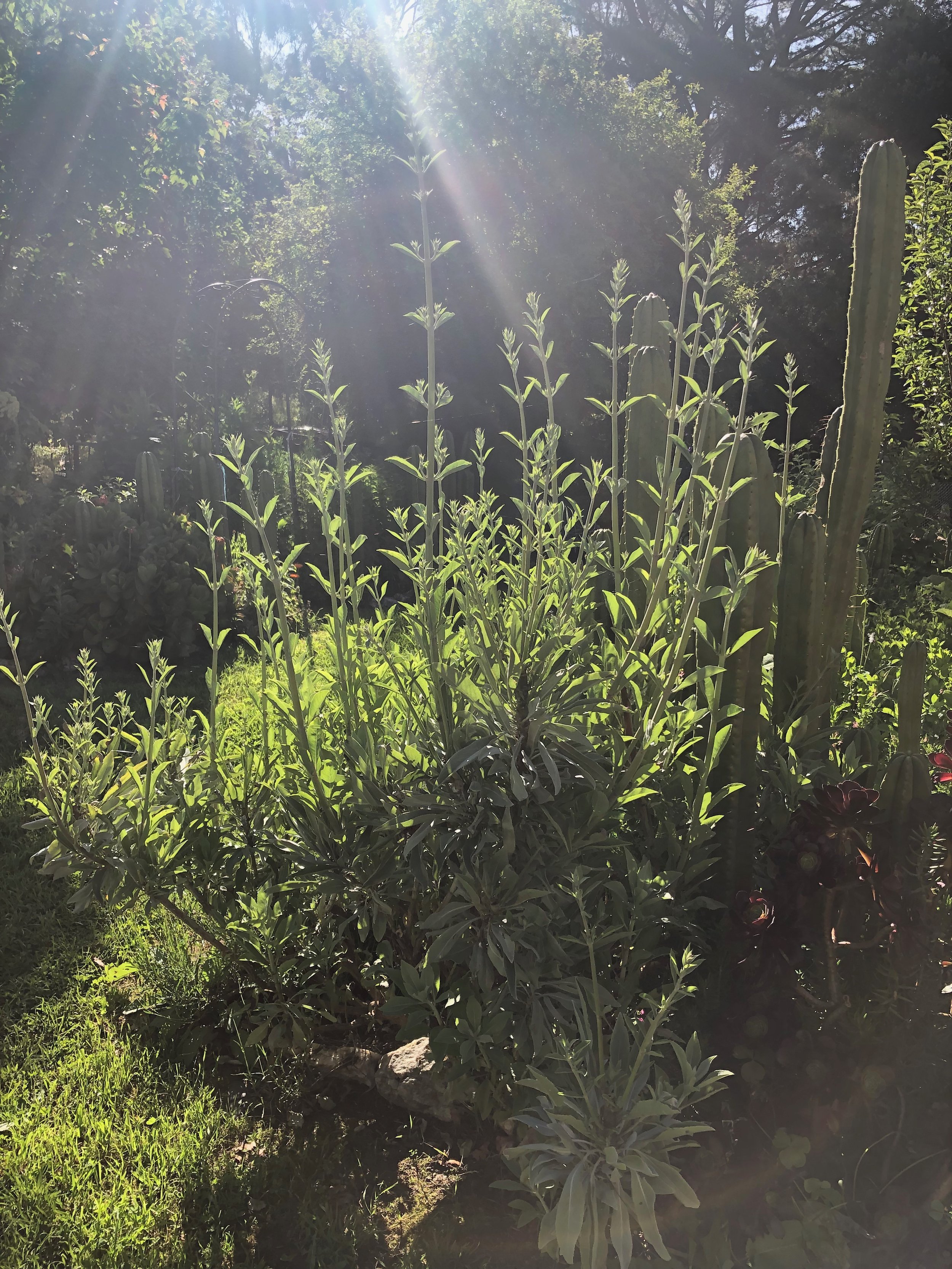 Image 1 of 6
Image 1 of 6

 Image 2 of 6
Image 2 of 6

 Image 3 of 6
Image 3 of 6

 Image 4 of 6
Image 4 of 6

 Image 5 of 6
Image 5 of 6

 Image 6 of 6
Image 6 of 6







Sage (White) Seeds
White Sage (Salvia apiana)
Description:
White sage is a woody perennial herb, of the Lamiaceae family, known for its sacred and aromatic leaves across native American cultures for its ceremonial and medicinal purposes. White sage is native to the southwestern area of North America and northwestern Mexico, specifically areas of California and Baja. It is one of the larger species of Salvia, typically growing to a height of 3 to 5 feet (0.9 to 1.5m) and has an upright, bushy appearance, doubling in height in its peak flowering period. The young light-green foliage develop into white oblong or lance-shaped leaves, covered in fine, velvety hairs, giving them a soft resinous texture. White sage produces clusters of small, white flowers on tall, hollow stalks that often tower above the grower or anyone who stands under it.
NOTE: these seeds have climatised to our freezing winters over several years, and have shown to have an excellent germination rate.
Growing Conditions:
Climate: arid and semi-arid to cool-temperate; prefers hot, dry summers and mild winters.
Position: full sun exposure with at least 6 to 8 hours a day; prefers intense, direct sunlight for optimal growth.
Soil: well-draining, sandy and/or rocky soil; can adapt to loamy soil types, as long as it is well-draining; ideal soil pH should be slightly acidic to neutral, ranging from 6.0 to 7.5.
Water: minimal water needs and is adapted to dry conditions; overwatering can lead to root rot and other issues. It is important to mimic the plant's natural arid environment.
Spacing: space the plants approximately 2 to 3 feet (60 to 90cm) apart.
Propagation: sow seed in a sandy soil mix (cactus mix works well), barely cover and tamp securely. Keep them warm and water sparingly (once daily) will do. To help improve germination, scarify seeds with fine sandpaper before planting; take cuttings from established plants in spring or early summer and root them in well-draining soil or water.
Harvest: harvest leaves as needed once the plant has matured and developed a sufficient number of leaves throughout the growing season. Avoid removing more than one-third of the foliage at a time to ensure continued growth.
50 seeds per pack
White Sage (Salvia apiana)
Description:
White sage is a woody perennial herb, of the Lamiaceae family, known for its sacred and aromatic leaves across native American cultures for its ceremonial and medicinal purposes. White sage is native to the southwestern area of North America and northwestern Mexico, specifically areas of California and Baja. It is one of the larger species of Salvia, typically growing to a height of 3 to 5 feet (0.9 to 1.5m) and has an upright, bushy appearance, doubling in height in its peak flowering period. The young light-green foliage develop into white oblong or lance-shaped leaves, covered in fine, velvety hairs, giving them a soft resinous texture. White sage produces clusters of small, white flowers on tall, hollow stalks that often tower above the grower or anyone who stands under it.
NOTE: these seeds have climatised to our freezing winters over several years, and have shown to have an excellent germination rate.
Growing Conditions:
Climate: arid and semi-arid to cool-temperate; prefers hot, dry summers and mild winters.
Position: full sun exposure with at least 6 to 8 hours a day; prefers intense, direct sunlight for optimal growth.
Soil: well-draining, sandy and/or rocky soil; can adapt to loamy soil types, as long as it is well-draining; ideal soil pH should be slightly acidic to neutral, ranging from 6.0 to 7.5.
Water: minimal water needs and is adapted to dry conditions; overwatering can lead to root rot and other issues. It is important to mimic the plant's natural arid environment.
Spacing: space the plants approximately 2 to 3 feet (60 to 90cm) apart.
Propagation: sow seed in a sandy soil mix (cactus mix works well), barely cover and tamp securely. Keep them warm and water sparingly (once daily) will do. To help improve germination, scarify seeds with fine sandpaper before planting; take cuttings from established plants in spring or early summer and root them in well-draining soil or water.
Harvest: harvest leaves as needed once the plant has matured and developed a sufficient number of leaves throughout the growing season. Avoid removing more than one-third of the foliage at a time to ensure continued growth.
50 seeds per pack
White Sage (Salvia apiana)
Description:
White sage is a woody perennial herb, of the Lamiaceae family, known for its sacred and aromatic leaves across native American cultures for its ceremonial and medicinal purposes. White sage is native to the southwestern area of North America and northwestern Mexico, specifically areas of California and Baja. It is one of the larger species of Salvia, typically growing to a height of 3 to 5 feet (0.9 to 1.5m) and has an upright, bushy appearance, doubling in height in its peak flowering period. The young light-green foliage develop into white oblong or lance-shaped leaves, covered in fine, velvety hairs, giving them a soft resinous texture. White sage produces clusters of small, white flowers on tall, hollow stalks that often tower above the grower or anyone who stands under it.
NOTE: these seeds have climatised to our freezing winters over several years, and have shown to have an excellent germination rate.
Growing Conditions:
Climate: arid and semi-arid to cool-temperate; prefers hot, dry summers and mild winters.
Position: full sun exposure with at least 6 to 8 hours a day; prefers intense, direct sunlight for optimal growth.
Soil: well-draining, sandy and/or rocky soil; can adapt to loamy soil types, as long as it is well-draining; ideal soil pH should be slightly acidic to neutral, ranging from 6.0 to 7.5.
Water: minimal water needs and is adapted to dry conditions; overwatering can lead to root rot and other issues. It is important to mimic the plant's natural arid environment.
Spacing: space the plants approximately 2 to 3 feet (60 to 90cm) apart.
Propagation: sow seed in a sandy soil mix (cactus mix works well), barely cover and tamp securely. Keep them warm and water sparingly (once daily) will do. To help improve germination, scarify seeds with fine sandpaper before planting; take cuttings from established plants in spring or early summer and root them in well-draining soil or water.
Harvest: harvest leaves as needed once the plant has matured and developed a sufficient number of leaves throughout the growing season. Avoid removing more than one-third of the foliage at a time to ensure continued growth.
50 seeds per pack